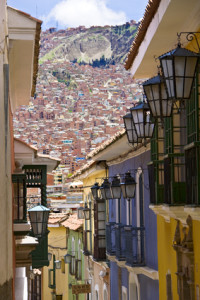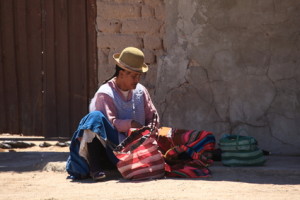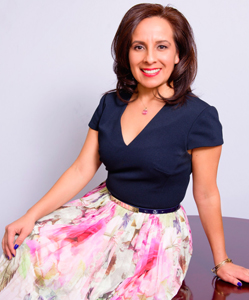This is a culture that enjoys their art and music. Color is often associated with Bolivia in that much of the art coming from this region is rich with vibrancy and lively shades.
 The official name of Bolivia is known as the Plurinational State of Bolivia (Estado Plurinacional de Bolivia) and is located in South America. It is bordered by, Peru,
The official name of Bolivia is known as the Plurinational State of Bolivia (Estado Plurinacional de Bolivia) and is located in South America. It is bordered by, Peru,
Chile, Argentina, Paraguay, and Brazil. Initially this area belonged to the Inca Empire, but in the 16th century, during the Spanish colonization, this changed. The name of Bolivia comes from the leader Simón Bolívar.
The overall population of Bolivia is approximately 10 million. In Bolivia you will find much diversity among the population as there are actually thirty four indigenous languages spoken throughout the country in addition to the main four of Spanish, Guarani, Quechua, and Aymara.
The country is divided into nine democratic republic departments and is considered a developing country.
Three Main Cultures
Quenchua is the largest culture of Bolvia. They have approximately 2.5 million people that continue to hold steadfast to this group or culture. They speak the Quechua language. They primarily farm and some of the main crops grown are corn, quina, potatoes, and tubers. Their main crop, though, is cocoa. In addition to these farming skills, they also continue to practice animal husbandry.
The Aymara is the second biggest group/culture in Bolivia. There are approximately 2 million people in this particular group. Their main source of income comes from a variety of areas such as selling handcrafts, mining, fishing, and also animal husbandry.
The third group is the Uru. This group has fewer than three thousand people within the community. Their main income comes from selling handcrafts to locals, but mostly tourists. They have their own Uru language, which is quite distinct and continues to be passed on to the younger generation in the hopes that it will remain intact.
Other Distinct Cultures Within Bolivia
Although there are some main cultures within Bolivia, the many other distinct cultures are also very much a part of this society. These cultures are distinct and separate from each other, but time has a way of intertwining people and their way of life. As we continue to become a more global society and people begin to mix with each other, things will begin to change – that is inevitable.
 Most of the people in Bolivia are of a mixed race. Many have Spanish ancestry as other Latin countries within the region. Included in this mix are those classified as Mestizos, Europeans, Africans, Asians, and Amerindians. It is all these diverse cultures that make up Bolivia.
Most of the people in Bolivia are of a mixed race. Many have Spanish ancestry as other Latin countries within the region. Included in this mix are those classified as Mestizos, Europeans, Africans, Asians, and Amerindians. It is all these diverse cultures that make up Bolivia.
Income is greatly based on agriculture; therefore, this is a big part of society. In many areas, nuts and fruits are the main crop. In other areas its bananas, beans, and manioc which are also widely known products of Bolivia. Without this agricultural mainstay, it would be a difficult struggle for the people of Bolivia. In addition to agriculture, cattle ranching is another way for the people of Bolivia to make a living.
In the early 20th century, tin became a viable source of income and quickly replaced silver. Working in the mines also became another form of employment for the people of Bolivia; however, this did not improve the conditions of the working poor. It only enriched the pockets of the wealthy few.
Eventually, through the Revolutionary Nationalist Movement (MNR) in 1952, and under the platform of President Victor Paz Estenssoro, things began to change. He began to promote land reforms and rural education for the poor and the tin mines were nationalized. In the late 20th century, and in his third term, the President was overthrown. Several weak governments ensued. In 1967 Che Guevara was killed by the CIA and the Bolivian Army. Today, Evo Morales is the president.
Celebrations
As for common celebrations in this country, it is safe to say that each mini culture shapes their own traditions; however, there are some major holidays that are known throughout the country.
Achocalla is a festival that is mostly celebrated among the smaller villages and townships of Cochabamba and Sucre. The people celebrate the traditional music and heritage.
Carnival is another important time of celebration and takes place in February. This involves colorful parades and is full of Andean flavor and culture.
One of the biggest is Semana Santa (sacred week), which takes place in April. This celebration is geared around Good Friday and Easter.
You also have Inti Raymi, which is an elaborate ritual celebrating the solemn feast of the sun and centered around the summer equinox. This particular celebration dates back thousands of years.
Within Bolivian culture, you will find much diversity, color, religious expressions, and political interests. If you are looking for a place with diverse cultures and magical luster, Bolivia will be hard to beat.




